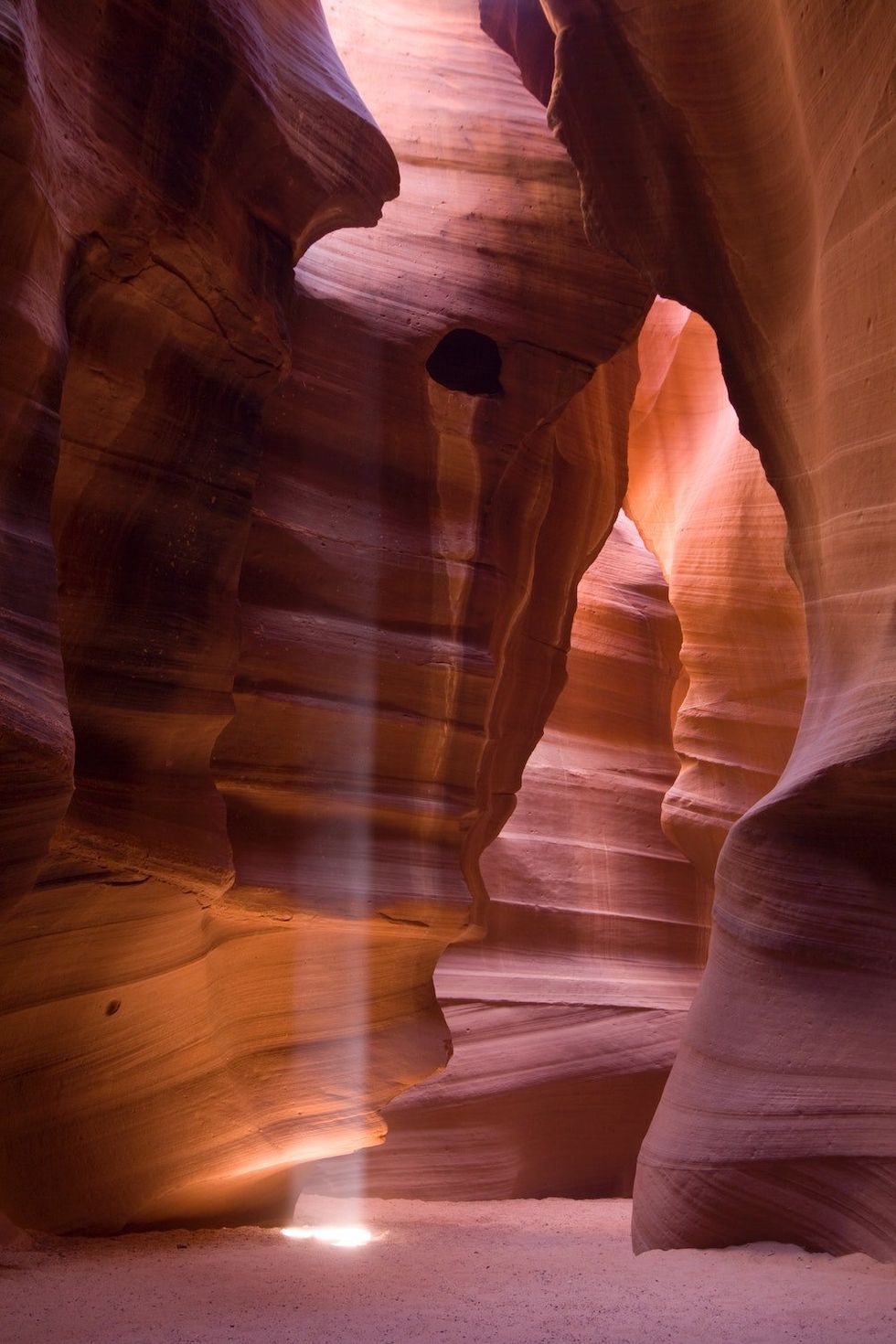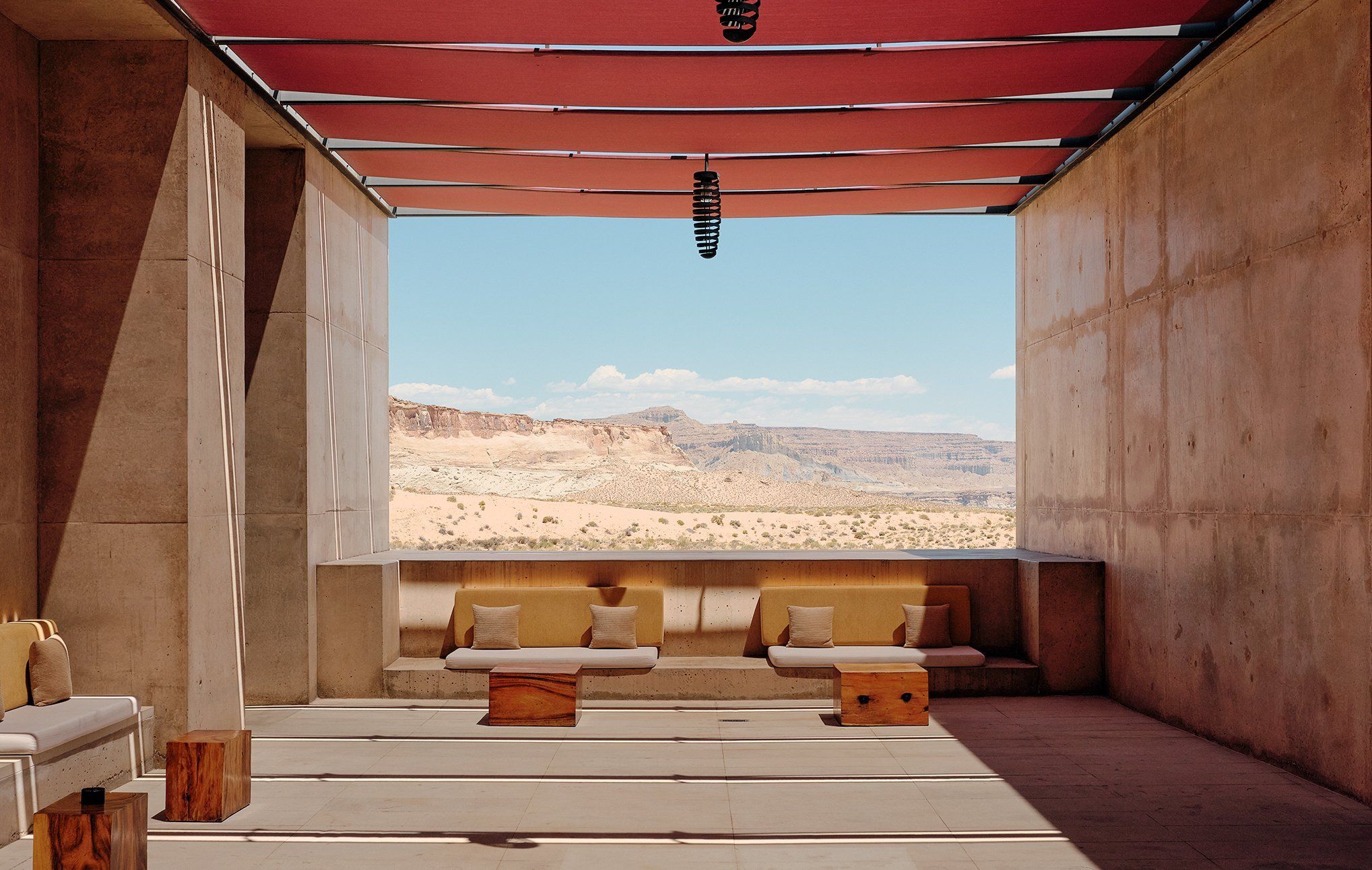At the start of the new year, I ventured to Amangiri, a modern, storied resort cut like a cliff dwelling into the stark and stunning rock formations of southern Utah.
The 20-minute drive to the property from the small airport in Page, Arizona offered a first look at the region. Situated at the base of Utah's Grand Staircase-Escalante National Monument and the northwestern edge of Navajo Nation, this is a quintessential southwestern landscape of plateaus, canyons, and a few odd hoodoos in a palette of sand and rust.
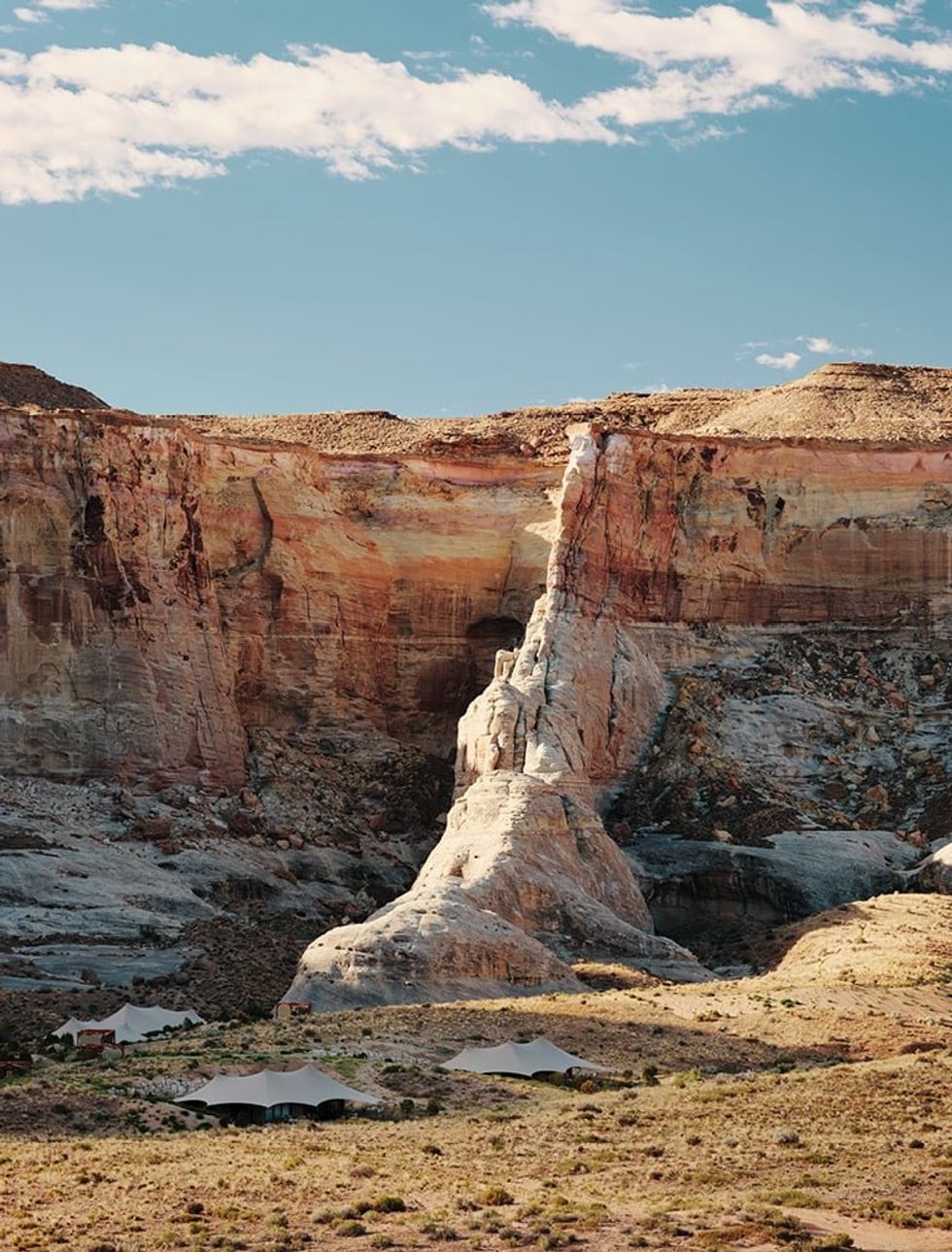
The blue of Lake Powell snaked through the dry rock but isn't much of an oasis these days. The water was so low it could be mistaken for a minor river. Our driver, a Navajo woman who grew up and still lives on the reservation, recalled childhood summers spent swimming in the lake, her nostalgia tinged with real sorrow for the depletion of the man-made reservoir which would hold overflow from the Colorado River if there were any. She was the first of a few Native people here to relate a similar tale over my weekend stay.
You'll know you've arrived at Amangiri when you spy the megalith that's sometimes called the Praying Monk. It is a game guests play to see different faces in the rock. At various angles I saw the monk, but also a gorilla or a Native chief with an impressive headdress. Whatever you see, there is no denying it has some quality that seems to designate this 900-acre swath of land as special, even spiritual. And while we're told it is a nature-made sculpture, I can't help but think it appears to have been placed here as a monument by some prehistoric people (but then again, I have been binge-watching Ancient Apocalypse on Netflix!).
Aside from this unusual megalith, the approach to the resort is somewhat anticlimactic. I didn't even notice its modernist architecture until we arrived at the security gate. With room rates starting around $3,000 a night, you might expect a grander entrance, but there's not much in the way of lavishness here except for the long, magnificent stretch of quiet, unoccupied land. This is the understated luxury and ethos of Amangiri.
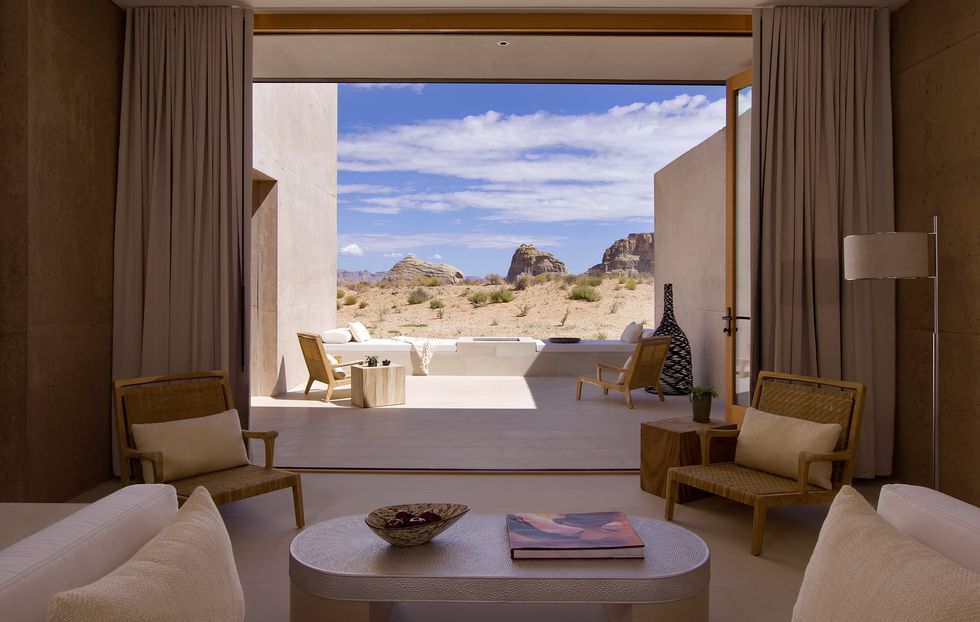
It was my second experience with Aman (the first, at Jackson Hole's Amangani in 2021), a brand of beyond-five-star resorts and hotels located in some of the most magical places on Earth, but currently with just three in the U.S. (including a hyper-luxe new stay in New York). Each property is built to reflect its unique landscape and local culture without taking too much from it; Amangani a classic mountain lodge to Amangiri's canyon-embedded bunker. The architecture here in Utah is exceedingly thoughtful, the design minimalist and of the place—think natural elements like stone and wood, rough-hewn water features, and Native pottery and baskets everywhere.
The service is flawless and every last detail refined, but there is nothing at Amangiri that screams extravagance; it is for travelers who don't need to be impressed by material things, for wanderers who care about things like environmental conservation and cultural integration. The impressiveness of the landscape is allowed to shine, a much-needed refuge for connection between humans and nature.
This intention is clear as we arrive in our suite, where the front door offers a direct view overtop plush beds, through floor to ceiling sliding glass windows, out to a patio with a fire pit, and beyond to the great rugged expanse. We are instructed not to worry about closing the blackout curtains. Unless you have something against a dramatic sunrise, the drapes are unnecessary as guests are asked not to pass here for the sake of privacy and the unobstructed view. This panorama can also be seen from the deep soaking tub and dual rainfall showers in our cavernous, green stone–tiled bathroom. I met with our tub well past nightfall and regretted not having timed my bath with sunset.
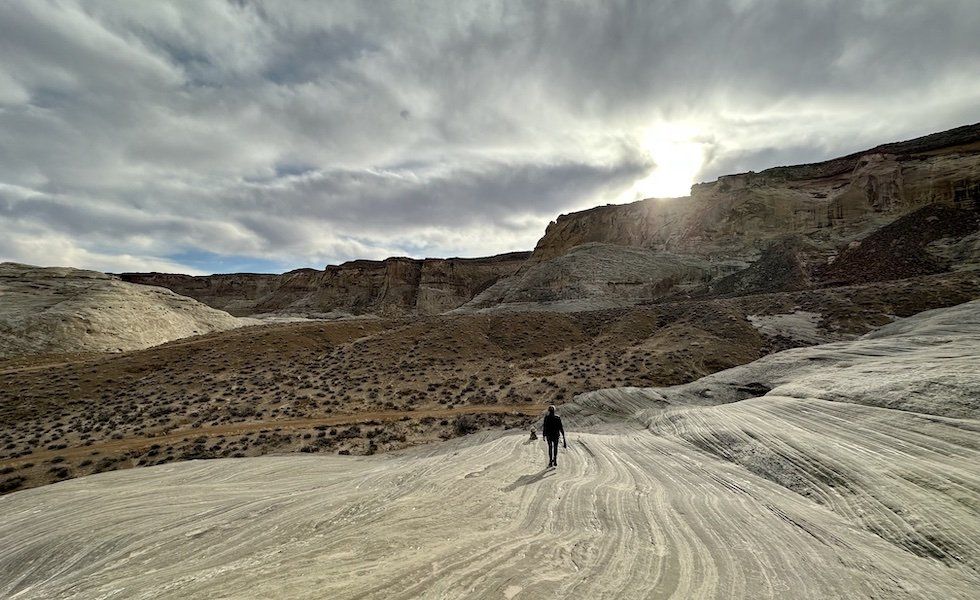
Like the natives who've kept eyes on this territory for centuries before us, we have little more to attend to than the sky, its desert sun and moon and uncanny smattering of stars, and the sweeping scene they all make, like an ever-changing live painting, as the day goes by. And then there's the land, where across miles of on-property trails our boots meet with well-worn sandstone and odd boulders studded with small river rocks said to be millions of years old, from back when this land mass was, like much of the ancient world, submerged in endless water.
On Amangiri's East Coyote Trail, we followed a dirt path marked by subtly placed cairns and marvel at these bizarre stones along with various native plants stubbornly shooting up from parched earth: Indian rice grass, some kind of yucca, desert sage and, on occasion, an otherworldly pop of color in a flower that has dried on its stalk but retained its hue of youth. But all these details feel tiny when you zoom out to see the bigger picture, which isn't really big so much as infinite, of undulating canyon and cliff face the seems both wildly textural and perfectly smooth at once, like a trompe-l'œil painted by the brush of elements and time. Guests can get a closer look of the geology with yoga on the rocks or, for thrill seekers, on the property's Via Ferrata climbing route.
At Amangiri, though, these optical illusions aren't reserved just for those who do the legwork of seeking them out. The terrain can be easily viewed through every window in the place. Breakfast in the dining room brings tough choices: tamale benedict or cast iron pancakes, a view of the valley floor or toward the pool, the property's pièce de résistance. On a winter morning, the chilly air meets the heated surface to mythical effect, sending up floaty steam that licks at a central rock formation, which juts out to greet its own reflection on a perfectly still plane of glassy turquoise water.
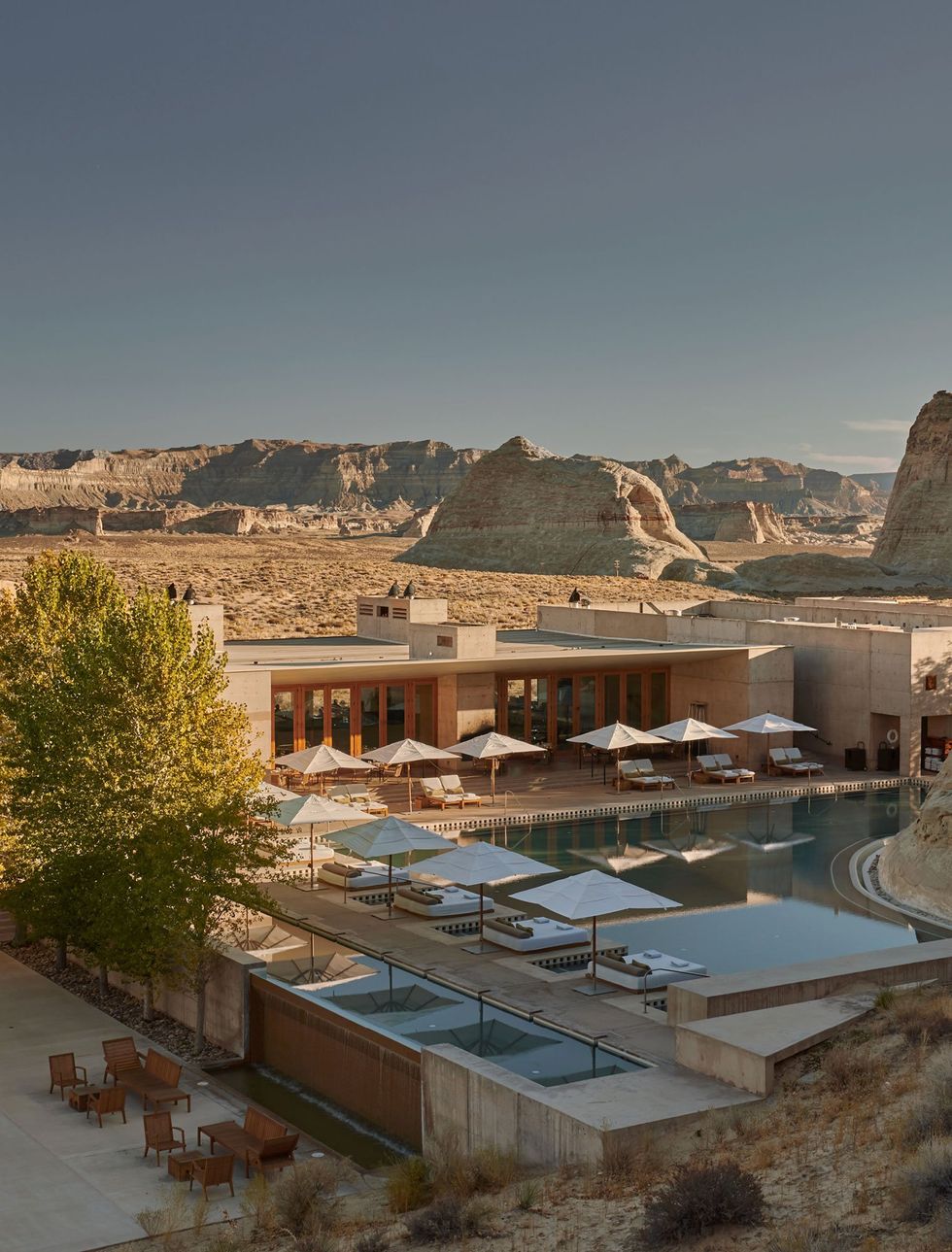
The excessively Instagramable central swimming pool is a hint of what's hiding out behind heavy doors to the spa—an austere stone hallway, dark except for the light of dripping white pillar candles. Nothing could be more simple really, but when waking up at Amangiri feels like being born anew into a vast and wild world, stepping into its spa is more akin to tucking safely back into the womb. It's the essence of warm and cozy. There are wood-burning fireplaces, treatment rooms designed to feel like simple Navajo homes, and massages, body wraps, and facials geared toward grounding, purifying, and nourishing. You can sign up for guided meditations, a crystal sound bath and Pilates classes, but under no circumstance can you miss the private hot tub carved into the natural rock.
If you can muster up the motivation to leave this wellness heaven, Amangiri's adventure concierge can set you up with any of numerous epic activities including excursions into nearby Bryce Canyon, the Grand Canyon, and Zion National Park. Prefer a bird's eye view? Summon a hot air balloon or a helicopter. My brief stay allowed time only for a short jaunt off the property but it was an inspiring one, and one I hope to long carry with me.
Ahead of our Navajo guide Raymond Chee, another who was born and raised and is now raising his own young son on the nearby reservation, we squeezed and shimmied and played like kids through a trio of secret slot canyons whose old red sandstone rose in high, tight cliffs, like monstrous tidal waves every which way we turned, beneath the watch of a great horned owl. A reflective type, Chee recalled his own childhood playing in these canyons—his game was to scale the vertical rock like lizards without ever touching the ground—and later shared a traditional Navajo prayer. In his native tongue, he asked Mother Earth to carry his negative thoughts off onto the wind, to turn them into something beautiful like a raindrop or a flower. Legend has it, he told us, that it was these very thoughts, carried on the winds through the prayers of his ancestors, that had carved out the wavelike patterns of the twisting slot canyons so many centuries ago.
And so this is how my visit to Amangiri inspired a new year's resolution that I access from time to time: When I feel anxious or overwhelmed, I will take a deep breath and exhale it into the southwestern slot canyon of my mind's eye, and watch it swoop and fly away and transform into something beautiful.
// Amangiri, Canyon Point (Utah), aman.com/resorts/amangiri
